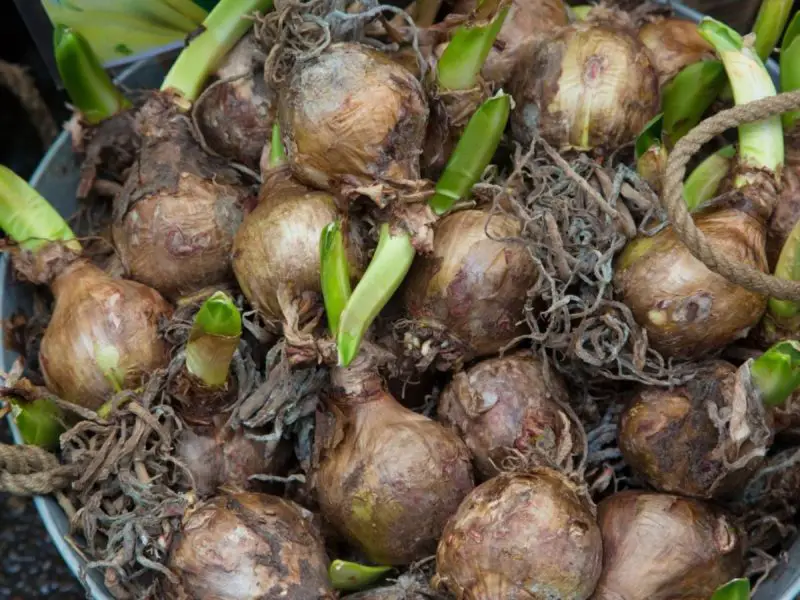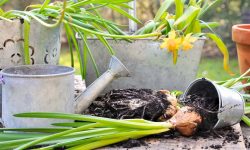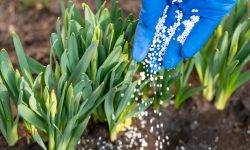When spring fades and the last daffodil petals fall, many gardeners wonder how to keep their favorite flowers thriving year after year. Preserving daffodil bulbs is the secret to ensuring those golden trumpets return, strong and brilliant, each new season. Without proper care, bulbs can rot, weaken, or lose their ability to bloom. Learning how to preserve them correctly not only protects your investment but also keeps your garden bursting with color every spring.
Preservation begins the moment flowering ends. Timing, storage, and soil management all play vital roles in keeping daffodil bulbs healthy during their dormant months. With a little attention and care, you can maintain bulb vigor, prevent disease, and prepare them for the next planting cycle. This guide covers every essential step — from post-bloom care to storage techniques — so your daffodils will return each year more radiant than before.
Understanding Daffodil Bulbs and Their Life Cycle

To preserve daffodil bulbs successfully, you must first understand how they live, grow, and rest throughout the year. Daffodils are hardy perennial bulbs that follow a continuous rhythm of renewal — growing, flowering, and then resting. Each bulb acts as both the plant’s heart and its energy storage center, containing layers of nutrients and a tiny embryo of the next flower. In early spring, as the soil warms, the bulb awakens from dormancy. Roots begin to stretch downward while shoots push upward, drawing strength from stored reserves. The energy stored from the previous year is what fuels the daffodil’s bright, trumpet-shaped blooms.
After flowering, the plant transitions from display to recovery. The leaves remain green and active for several weeks, absorbing sunlight and transforming it into energy. This process replenishes the bulb’s internal reserves, preparing it for the next blooming cycle. Many gardeners mistakenly remove the foliage too soon, not realizing that every day of photosynthesis contributes to next year’s success. During this stage, daffodils benefit from consistent watering and a balanced environment that supports their post-bloom nourishment. The healthier the leaves remain, the more energy the bulb will store for next spring.
By late spring or early summer, daffodils naturally enter dormancy. The leaves yellow, the stems dry out, and the bulb retreats underground to rest. While invisible above the soil, it’s very much alive below the surface, conserving energy for its next reawakening. Understanding this life cycle helps gardeners know exactly when to feed, divide, or store bulbs. Caring for daffodils in rhythm with their natural growth ensures longevity, stronger roots, and the promise of stunning blooms year after year.
When to Dig Up Daffodil Bulbs After Flowering
Knowing when and how to dig up daffodil bulbs is essential to preserve their strength for the next blooming season. The perfect time to lift the bulbs is once the foliage turns completely yellow and begins to dry. This stage typically occurs six to eight weeks after flowering. During this time, the bulbs have finished drawing nutrients from their leaves and are ready for rest. Digging too early stops the energy transfer, resulting in smaller bulbs. Waiting too long, however, can cause rot, pest infestation, or bulbs becoming buried too deep in compacted soil. Always choose a dry day to dig, as wet soil makes bulbs slippery and more prone to damage.
The digging technique is as important as timing. Use a garden fork or trowel instead of a spade, which can easily cut into bulbs. Insert the tool about 6 inches (15 cm) away from the plant’s base and angle it slightly toward the center. Gently loosen the surrounding soil to a depth of 8 inches (20 cm) for large varieties or about 6 inches (15 cm) for smaller ones. Lift the entire clump slowly from beneath rather than pulling by the leaves. Once removed, shake off loose soil gently without scrubbing or washing the bulbs. Keeping the outer layers intact protects them from fungal infection.
After digging, spread the bulbs on newspaper or mesh trays in a shaded, airy location. Allow them to dry for up to two weeks until the skins become firm and papery. Avoid direct sunlight, which dehydrates the bulbs. Once cured, trim any dead roots or leaves, label them clearly, and prepare for proper storage until replanting in fall.
How to Clean and Dry Daffodil Bulbs Properly
After lifting daffodil bulbs from the ground, cleaning and drying them correctly is vital to preserving their health for replanting. Start by gently removing excess soil with your hands or a soft brush. Avoid washing them directly under water since moisture trapped between bulb layers can trigger mold or rot. If the bulbs are very dirty, wipe them lightly with a damp cloth, then allow the surface to dry immediately. Remove any loose outer skins or dried roots but leave the thin papery layer intact, as it acts as natural protection. Examine each bulb carefully, discarding any that show signs of softness, black spots, or moldy patches. Healthy bulbs should be plump, firm, and have a smooth, intact surface.
Once cleaned, lay the bulbs in a single layer on mesh trays, screens, or newspaper. Choose a cool, shaded, and airy place for drying — ideally around 60–70°F (15–21°C) with good air circulation. Never dry bulbs in direct sunlight or near a heat source, as high temperatures cause dehydration and cracking. Turn them every few days to ensure even airflow and prevent moisture buildup. Depending on humidity, the drying process can take one to three weeks. You’ll know they are ready when the outer skins feel papery and crisp, and the roots are completely dry.
Before storage, inspect the bulbs again for hidden decay or pests. If any bulbs feel slightly damp, allow extra drying time. Label them clearly by variety to avoid confusion during replanting. Proper cleaning and slow, consistent drying preserve bulb vitality, ensuring they remain disease-free and ready to burst into bloom the following spring.
Proper Storage Conditions for Daffodil Bulbs
Temperature Control for Long-Term Preservation
Temperature consistency is the foundation of successful daffodil bulb storage. The ideal range lies between 50°F and 60°F (10–15°C), a level that keeps bulbs dormant without freezing or forcing premature growth. At these moderate conditions, the bulbs conserve energy while remaining alive and ready for the next growing cycle. Storing them in warmer spaces risks early sprouting or drying out, while colder areas can damage internal tissues. Temperature shock weakens the bulb’s structure and shortens its lifespan.
For most gardeners, basements, unheated garages, or insulated sheds provide the most reliable storage environment. In warmer climates, bulbs may need to be kept in an air-conditioned or shaded interior room to prevent heat exposure. Using a thermometer to monitor fluctuations ensures stability throughout the dormant months. Avoid placing bulbs near heaters, vents, or windows that experience sudden temperature changes. Maintaining steady, moderate temperatures keeps daffodil bulbs firm, prevents premature sprouting, and ensures they stay in perfect condition until replanting time arrives.
Managing Humidity to Prevent Rot
Controlling humidity is essential to prevent daffodil bulbs from rotting or shriveling during storage. The ideal humidity level should remain between 40% and 50%. When moisture levels are too high, fungal spores thrive, leading to mold and decay. In contrast, overly dry air draws moisture from the bulbs, leaving them wrinkled and lifeless. The goal is to maintain a balance that allows bulbs to stay firm yet not damp. For best results, place bulbs in breathable containers such as mesh bags, paper sacks, or ventilated wooden crates lined with newspaper.
Regular inspection is crucial. Check bulbs every two to three weeks and remove any that appear soft, spotted, or moldy. In humid climates, using a small fan, silica gel packets, or a dehumidifier helps control excess moisture. For extra protection, gardeners can dust bulbs lightly with powdered sulfur or store them in dry peat moss to absorb humidity naturally. Proper humidity management not only prevents rot but also maintains the bulb’s nutrient integrity and vitality throughout the dormant season.
Choosing the Right Storage Environment
The environment in which daffodil bulbs are stored greatly affects their longevity. They need a space that is dark, dry, and well-ventilated to mimic natural underground conditions. Darkness prevents premature sprouting, while airflow minimizes condensation and regulates both temperature and humidity. Avoid areas exposed to direct sunlight or heat, such as attics or near radiators, since these can dry out or overheat the bulbs. A cool basement, cellar, or garden shed often provides the perfect balance of darkness and ventilation.
It’s also important to avoid storing bulbs near ripening fruits like apples or bananas, which release ethylene gas that damages plant tissues. Spread the bulbs in a single layer on wooden racks or mesh trays rather than piling them up. Label each batch clearly with the daffodil variety and harvest date for easy identification. If stored properly, bulbs remain firm, disease-free, and viable for replanting. A controlled, clean, and dark environment ensures daffodils awaken strong and healthy when the next growing season begins.
How to Replant Preserved Daffodil Bulbs for Best Results
Once your daffodil bulbs have been properly stored through summer, replanting them at the right time and depth is the key to achieving vibrant blooms next year. The best time to replant preserved bulbs is in early to mid-fall, roughly six weeks before the ground freezes. This timing allows bulbs to establish strong root systems before winter dormancy begins. Planting too early may cause premature sprouting, while planting too late can prevent proper root growth. Choose a well-drained, sunny location, as daffodils dislike sitting in soggy soil. Loosen the ground to at least 10 inches (25 cm) deep to allow for good drainage and easy root expansion.
The proper planting depth plays a major role in bulb health. A good rule of thumb is to plant bulbs at a depth three times their height. For most daffodil bulbs, this means burying them about 6 inches (15 cm) deep, measured from the base of the bulb to the soil surface. Space them about 4 to 6 inches apart to prevent overcrowding, which can limit airflow and cause fungal issues. Place each bulb with its pointed end facing upward, and cover gently with loose soil. Firm the surface lightly without compacting it, as tight soil can hinder sprouting.
After planting, water the area thoroughly to help settle the soil and trigger early root development. Applying a light mulch layer helps retain moisture and protects bulbs from temperature extremes. Avoid heavy watering during winter dormancy, as excess moisture can lead to rot. Once spring arrives, remove the mulch so shoots can emerge freely. Proper replanting not only revives preserved bulbs but also ensures they produce strong stems, healthy leaves, and abundant blooms that brighten your garden year after year.
Common Mistakes to Avoid
Storing Bulbs in the Wrong Conditions
One of the most common mistakes gardeners make is storing daffodil bulbs in unsuitable environments. Bulbs need cool, dark, and dry spaces where air circulates freely. Storing them in damp basements, sealed containers, or areas with high humidity traps moisture and invites fungal growth. Excess dampness can lead to mold, rot, or premature sprouting, weakening the bulbs before planting season arrives. Warm temperatures are equally damaging, as they cause dehydration and nutrient loss. Direct sunlight or exposure to warm air vents accelerates the bulbs’ aging process and reduces their blooming potential.
To avoid these issues, place bulbs in breathable containers such as mesh bags, wooden crates, or paper sacks. Line the bottom with newspaper or dry peat moss to absorb excess moisture. Keep the storage area between 50°F and 60°F (10–15°C) with moderate humidity. Inspect bulbs regularly for soft spots or mold, removing damaged ones immediately to prevent spread. Consistent airflow and cool conditions are the key to long-lasting preservation and healthy bulbs ready to burst into color next spring.
Planting at the Wrong Depth or Season
Many daffodil bulbs fail to thrive because they are planted at the wrong depth or during the wrong season. Planting too shallow leaves bulbs exposed to frost, temperature swings, and animal disturbance. Shallow bulbs may sprout early and then wither under sudden cold. Conversely, planting too deep restricts access to sunlight, forcing weak shoots that rarely flower. The ideal planting depth is three times the bulb’s height—usually about six inches for most varieties. This depth provides insulation against cold and ensures stable, upright growth during blooming.
Timing is just as crucial as depth. Planting too early in warm soil can cause premature growth that gets damaged by frost, while planting too late in frozen soil prevents root development. The best window is early to mid-fall, six to eight weeks before the first frost. This period allows bulbs to establish strong roots before dormancy. By following proper timing and depth, gardeners guarantee vigorous growth, uniform flowering, and reliable performance season after season.
Overwatering or Neglecting Drainage
Overwatering is one of the fastest ways to ruin daffodil bulbs. While bulbs require moisture to establish roots, they cannot tolerate standing water or compacted soil. Excess moisture fills air pockets in the soil, suffocating roots and triggering fungal infections such as bulb rot. Many gardeners mistakenly water frequently, especially during dormancy, not realizing that inactive bulbs absorb minimal moisture. Heavy clay soil and low-lying planting areas worsen the problem by retaining too much water and limiting oxygen.
To prevent overwatering, always plant bulbs in well-draining soil. Mixing sand, perlite, or compost into the bed improves drainage and aeration. After planting, water thoroughly once to settle the soil, then reduce watering frequency. During dormancy, allow soil to stay mostly dry to mimic natural resting conditions. Container-grown daffodils should have pots with several drainage holes to prevent water accumulation. A simple balance between moisture and airflow is what keeps bulbs firm, disease-free, and ready to produce strong roots and radiant spring flowers.
Preventing Pests and Diseases in Stored Daffodil Bulbs
Keeping daffodil bulbs free from pests and diseases during storage is one of the most important steps in ensuring healthy blooms next year. Even in seemingly perfect conditions, fungi and insects can quickly destroy bulbs. The most common fungal issues are Penicillium rot and Fusarium basal rot, which often appear as soft spots or blue-green mold on damaged tissue. Insects such as bulb flies, mites, and thrips also pose risks. The Narcissus bulb fly is particularly destructive; its larvae tunnel into the bulb, causing it to collapse from within. To avoid infestation, always discard damaged or rotting bulbs before storage, as one infected bulb can spread disease to dozens of others.
Cleanliness and sanitation are key to prevention. Before storage, disinfect all trays, containers, and shelves using a mild bleach or vinegar solution. Dust the bulbs lightly with powdered sulfur or a natural fungicide to kill surface spores. Avoid plastic or airtight containers, which trap humidity and encourage fungal growth. The storage space should remain cool, dark, and well-ventilated, with humidity between 40–50%. Regular air movement discourages both mold and pests. Check your bulbs every two to three weeks, looking for signs of decay, insects, or unusual odor.
If you discover pests or rot, remove the affected bulbs immediately to prevent contamination. You can also use natural deterrents such as dried bay leaves or cedar chips to repel insects. Avoid storing bulbs near fruits like apples or bananas, which emit ethylene gas that accelerates aging. Consistent inspection and preventive hygiene keep bulbs strong, healthy, and ready to flourish when replanted. A few minutes of care during storage can protect your entire daffodil collection and ensure stunning blooms season after season.
Tips for Maximizing Next Year’s Blooming Success
To guarantee spectacular daffodil blooms next year, start by focusing on soil quality and nutrition. Before replanting preserved bulbs, work organic compost or leaf mold into the top eight inches of soil to improve texture and drainage. A slow-release fertilizer with a 5-10-10 or 4-10-6 ratio supplies the phosphorus and potassium needed for root strength and flower production. Avoid using fresh manure or nitrogen-heavy products, which create lush leaves but fewer blooms. Daffodils prefer slightly acidic soil with a pH of 6.0 to 7.0. Testing your soil before planting allows you to make precise adjustments that enhance nutrient absorption and bulb performance. Well-prepared soil gives daffodils a strong foundation for future flowering.
Proper watering and mulching are equally important. After planting, water deeply to settle the soil around the bulbs, then keep it consistently moist—but never waterlogged—during autumn and early spring. A light two-inch mulch layer made of shredded bark or straw helps maintain even moisture and shields bulbs from sudden temperature shifts. After blooming, resist cutting back foliage prematurely. The leaves collect sunlight that fuels next year’s growth, so allow them to die back naturally. Applying a mild fertilizer after flowering supports energy storage inside the bulbs for the next bloom cycle.
Dividing daffodil clusters every three to five years prevents overcrowding and rejuvenates flowering strength. Overcrowded bulbs compete for nutrients and moisture, resulting in smaller, weaker flowers. Dig and replant them in fresh, well-aerated soil enriched with compost. Regularly check for bulb rot, fungal spots, or pests such as bulb flies, and remove affected bulbs immediately. Consistent feeding, spacing, and disease control guarantee that each spring’s display will be more vibrant and abundant than the last.
How to Revive Weak or Damaged Daffodil Bulbs
Not all daffodil bulbs survive storage in perfect condition, but many can be revived with careful treatment. Weak bulbs often look wrinkled, dehydrated, or slightly soft. Start by sorting them according to their condition. Firm, dry bulbs can usually recover, while mushy or moldy ones should be discarded. For dehydrated bulbs, soak them in lukewarm water for three to four hours before planting to restore lost moisture. Adding a teaspoon of liquid seaweed or rooting hormone to the water can help stimulate new root development. If any bulbs have visible fungal spots, treat them briefly with a diluted hydrogen peroxide solution before drying them thoroughly.
Once treated, allow the bulbs to air dry for several hours before planting. Choose a sunny to partially shaded area with well-draining soil enriched with compost. For weak bulbs, plant them slightly shallower—around four inches deep—to help them warm up quickly and establish roots. Space them at least four inches apart for proper airflow. Water thoroughly once after planting, but do not overwater in the following weeks. Consistent moisture encourages recovery, while soggy soil can cause renewed rot or mold.
To boost regeneration, feed the bulbs with a mild, balanced fertilizer low in nitrogen. This encourages strong roots without forcing excess foliage. Monitor their growth closely during the first season, removing any weeds that compete for nutrients. While weak bulbs may not bloom immediately, most will regain strength by the second year. Regular watering, good drainage, and patience are the keys to revival. By rescuing and replanting instead of discarding, you preserve both your garden’s beauty and the natural cycle of renewal that daffodils symbolize each spring.
Conclusion: Bringing Your Daffodils Back to Life Each Spring
Preserving daffodil bulbs is the key to keeping your garden glowing with color year after year. With proper timing, careful storage, and thoughtful replanting, each bulb becomes a promise of renewed beauty. Daffodils reward patience — the effort you invest today ensures brighter blooms tomorrow. When treated with care, these resilient bulbs return stronger every spring, filling your garden with life, warmth, and the joy of new beginnings.






